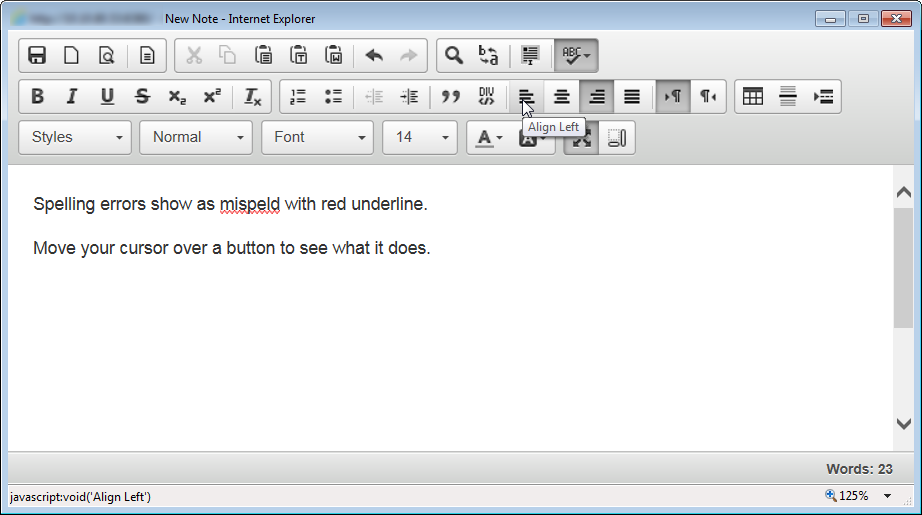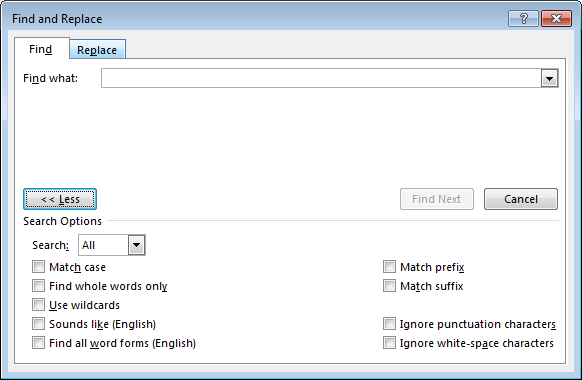Select the history icon ![]() to view the revision history of the note. This icon will only appear
to those with proper security rights to view revision history.
to view the revision history of the note. This icon will only appear
to those with proper security rights to view revision history.
Notes that have been set as inactive will
appear to those with proper security in bold
red font. These notes will not be visible to officers without
proper security.

Once a note has been opened,
select the Find button  to activate the Find and Replace
popup to search the note for any character desired. Click the
Replace tab to find instances
of a word or character and replace with a different word or character.
to activate the Find and Replace
popup to search the note for any character desired. Click the
Replace tab to find instances
of a word or character and replace with a different word or character.

The number of words in the note displays in the bottom right hand corner of the note/text editor pane.
The dictionary for the text editor is automatically updated. A red underline indicates a possibly misspelled word.
The editor also checks
for grammar and punctuation. A blue
underline indicates possible grammar and/or punctuation issues.

Use the Import button to import note content from Microsoft Word, Google Docs, Notepad or any other rich text editor. Once selected, the standard Microsoft file search window will open.
Browse to the desired file and select it to import the text from that file to the Universal Notes text area.
With proper security rights, a note may be set as Inactive. This removes it from view, but does not delete the note. There is a system parameter to enable\disable this button.
With proper security rights, saved notes may be edited. Edited notes should be stored as a new file in OMS, retaining any changes made as well as the original note.
A warning popup appears, “Are You Sure You Want to Edit This Note?” To proceed, enter security credentials. There is a system parameter to enable\disable this button.
With proper security rights, existing notes may be deleted. A warning popup appears, “Are You Sure You Want To Delete This Note?” Enter security credentials to verify. There is a system parameter to enable\disable this button.
Click on the Report History icon to view the history of changes made to this note.